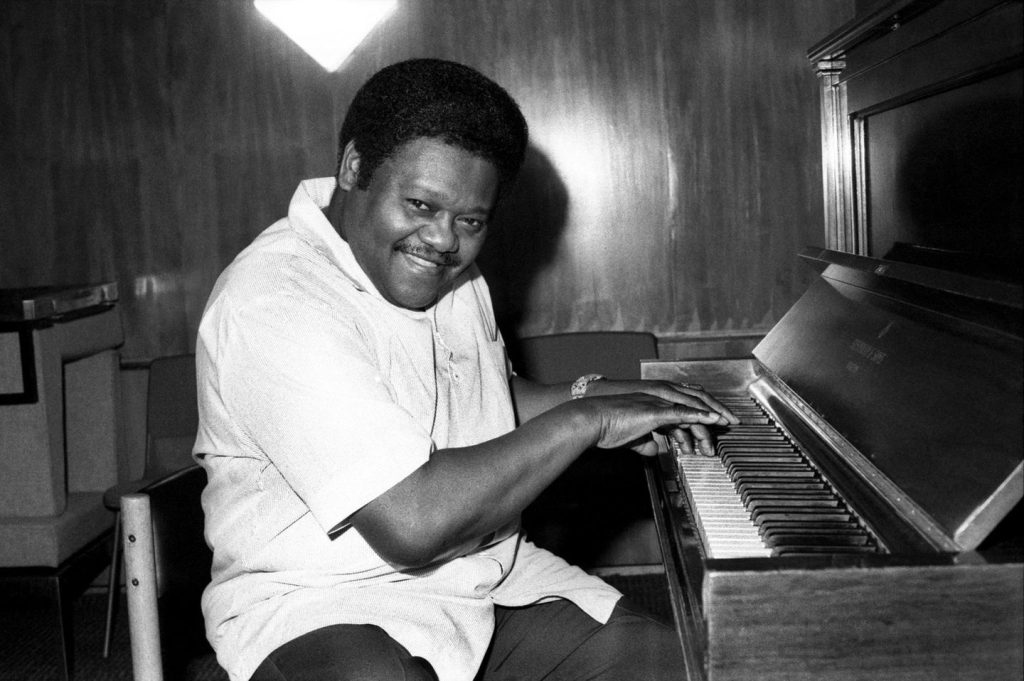
A Melancholic Anthem of Working-Class Struggles
When you hear the name Fats Domino, a wave of nostalgia might wash over you, taking you back to an era where rhythm and blues were the soul’s language. His song, “Blue Monday,” encapsulates the trials and tribulations of the working class in a way that only Domino could. Released in 1956, this track quickly climbed the charts, reaching No. 5 on the Billboard R&B chart and No. 9 on the Hot 100. It was a time when America was buzzing with post-war optimism, yet underneath that sheen lay the realities of everyday labor that many faced.
“Blue Monday” is more than just a song; it’s an evocative narrative set to music, painting a vivid picture of the weekly grind. The track was part of his album “This Is Fats,” which further cemented his reputation as one of the leading figures in rock and roll and rhythm and blues. His smooth, rolling piano lines paired with his warm, rich voice created an unmistakable sound that spoke to both heart and mind.
The story behind “Blue Monday” is rooted in the universal experience of workweek drudgery. Written by Dave Bartholomew and later popularized by Domino, it tells the tale of a man burdened by the weight of his job. Each day is laid out with painstaking clarity: the dreariness of Monday, the gradual climb to relief as the weekend nears, only to reset once again. It’s this cyclical nature of labor, punctuated by brief moments of respite, that resonates so deeply with listeners.
In terms of musical structure, Fats Domino brings his signature New Orleans flair to “Blue Monday.” The song features a laid-back yet insistent beat, reflective of both resignation and determination. His piano work is both rhythmic and melodic, providing a foundation over which his vocals can soar. There’s an innate warmth to Domino’s delivery that adds layers to the song’s meaning; you can feel both the weariness and the hope in his performance.
Lyrically, “Blue Monday” is simple yet profound. It captures universal truths about work-life balance long before such terms were coined. The opening lines set the tone: “Blue Monday, how I hate blue Monday / Got to work like a slave all day.” Here lies an unvarnished truth about labor—the feeling of being trapped in a cycle that leaves little room for personal freedom or fulfillment.
Yet despite its somber themes, there’s an undeniable sense of camaraderie and shared experience embedded within. This song speaks not just to individuals but to communities bound together by similar struggles. In its simplicity lies its power; every listener can find a piece of their own life within its verses.
As we delve deeper into Domino’s world through “Blue Monday,” it becomes evident why this track has stood the test of time. It’s not merely because it’s catchy or well-produced—though it certainly is both—but because it taps into something fundamentally human: our ability to persevere through hardship while holding onto hope for better days.
For those who lived through the 1950s, listening to “Blue Monday” today may evoke memories tinged with both nostalgia and reflection—a reminder of how far we’ve come and yet how some things remain unchanged. For younger generations discovering it anew, it offers insight into past struggles that continue to echo in modern times.
In conclusion, “Blue Monday” by Fats Domino remains an enduring classic not just for its musicality but for its profound commentary on life’s relentless cycles. It’s a testament to Domino’s artistry that he could capture such complex emotions within a seemingly simple framework—a reminder that great music often transcends words alone.
As you listen again or perhaps for the first time, let yourself be transported by its melodies and messages—an invitation from Fats Domino himself to reflect on your own journey through life’s many Mondays.